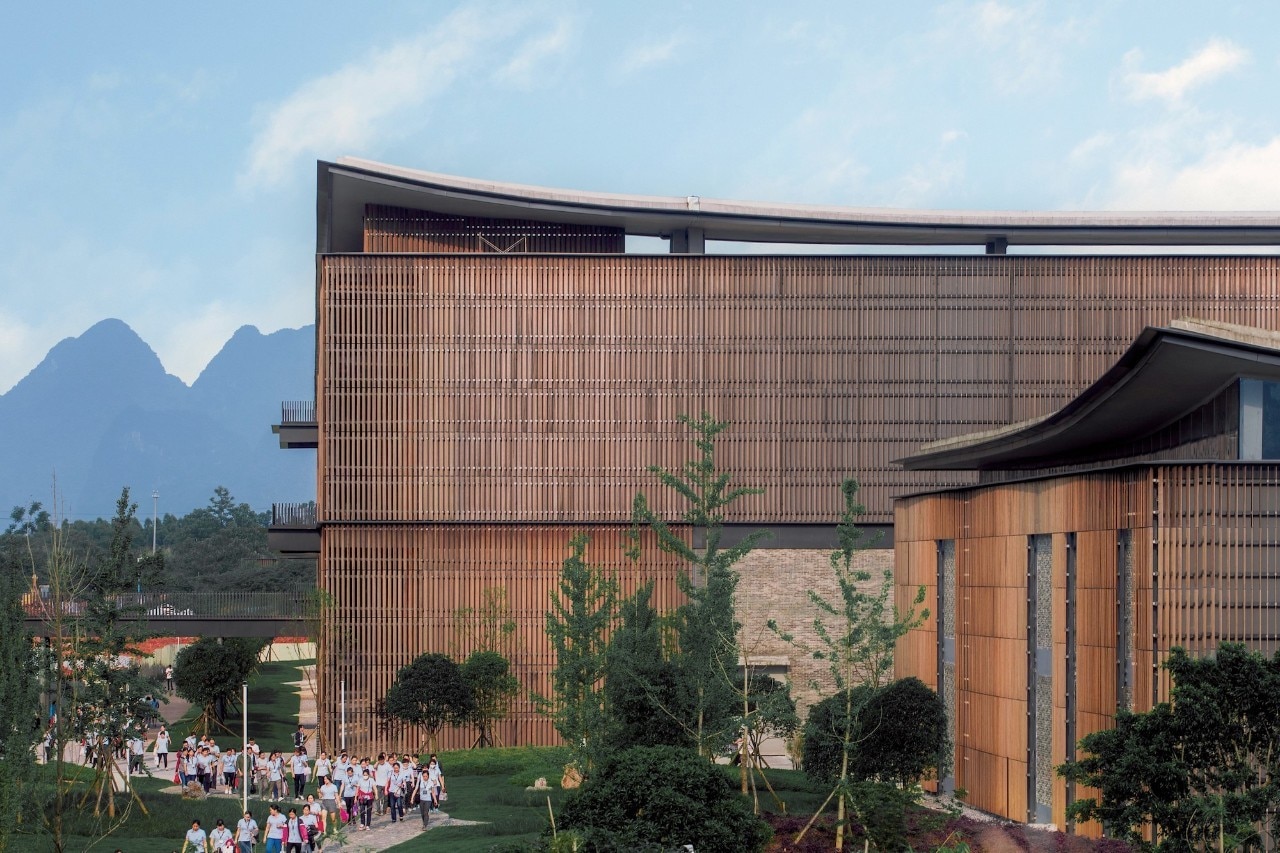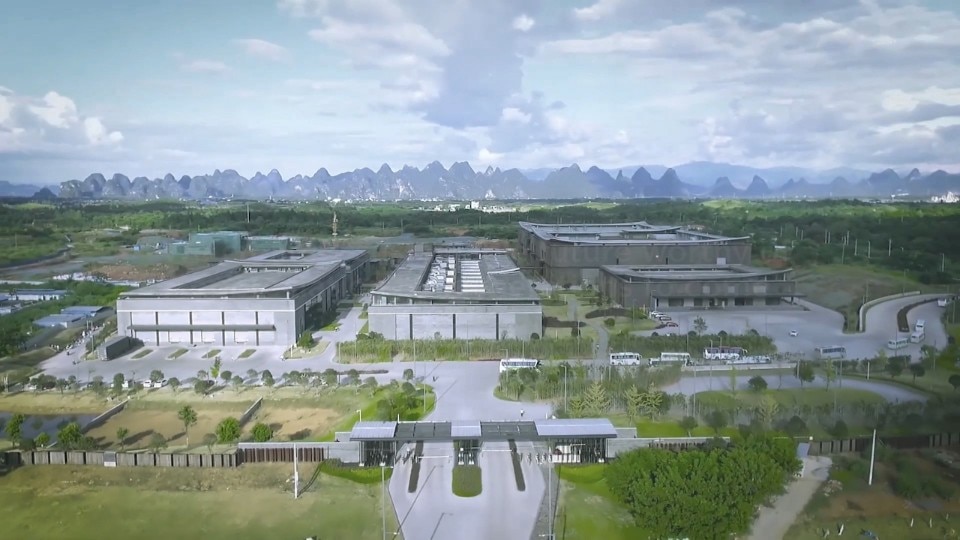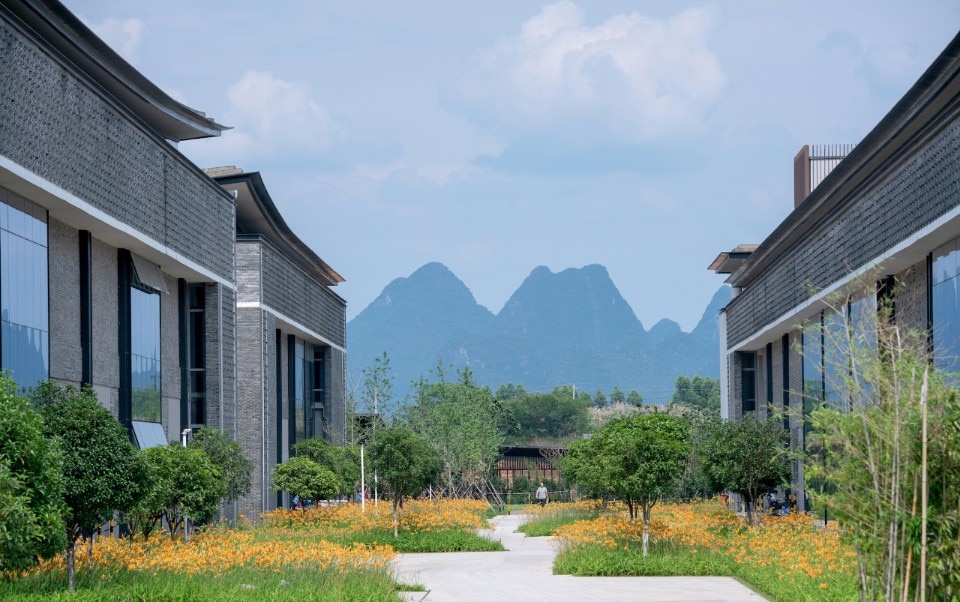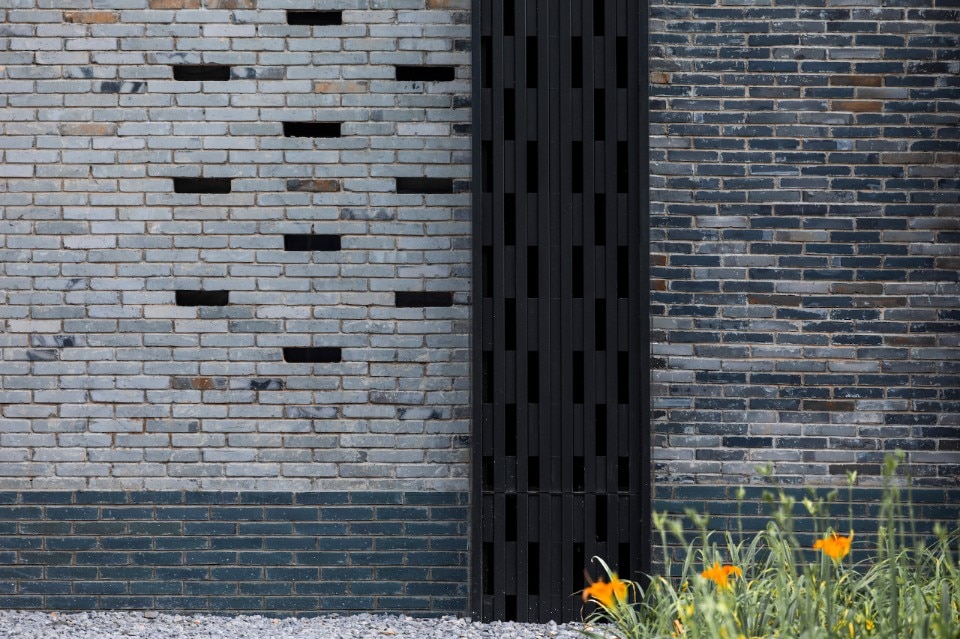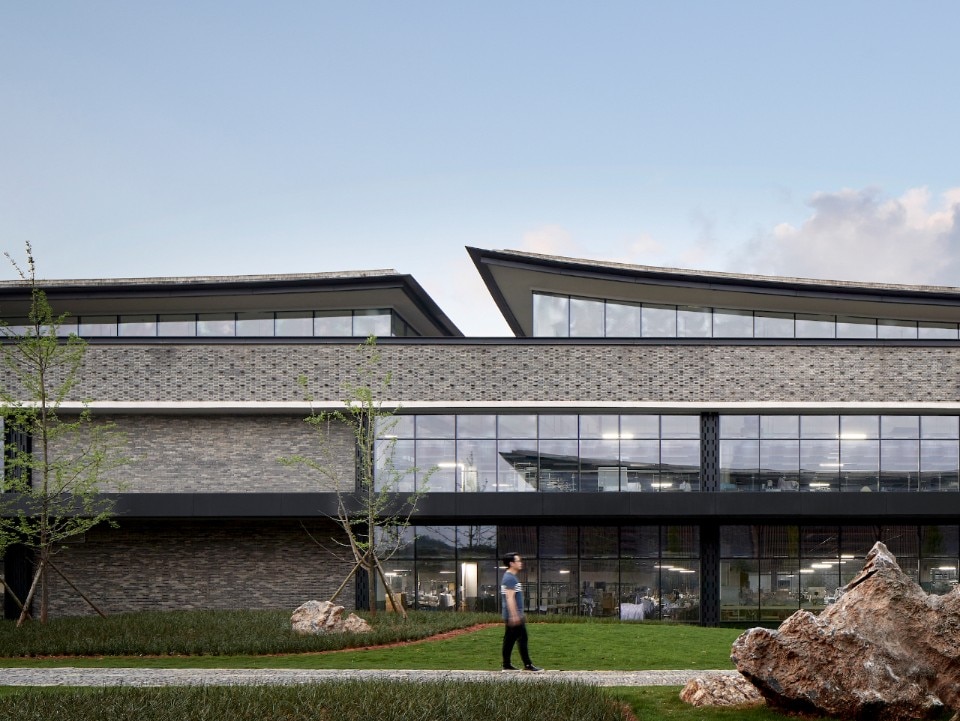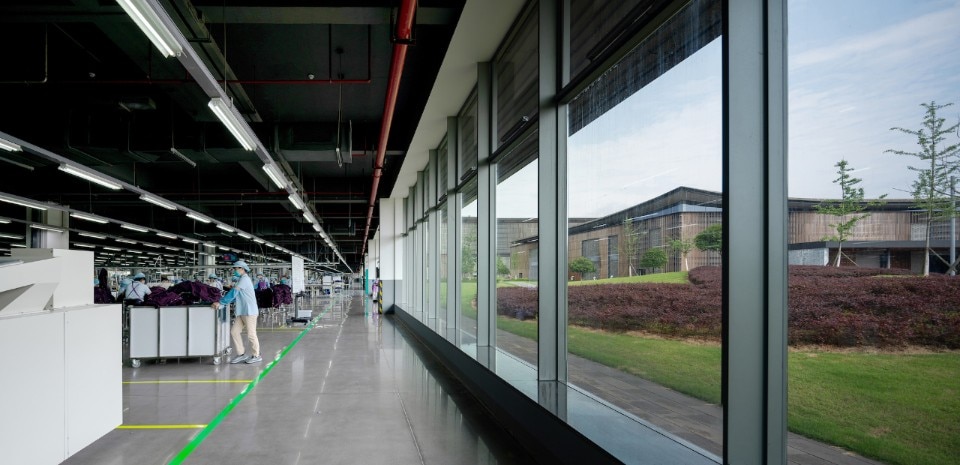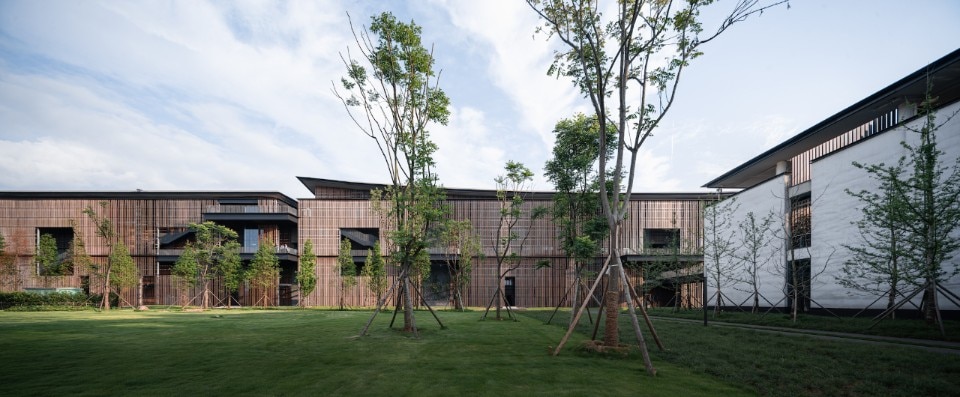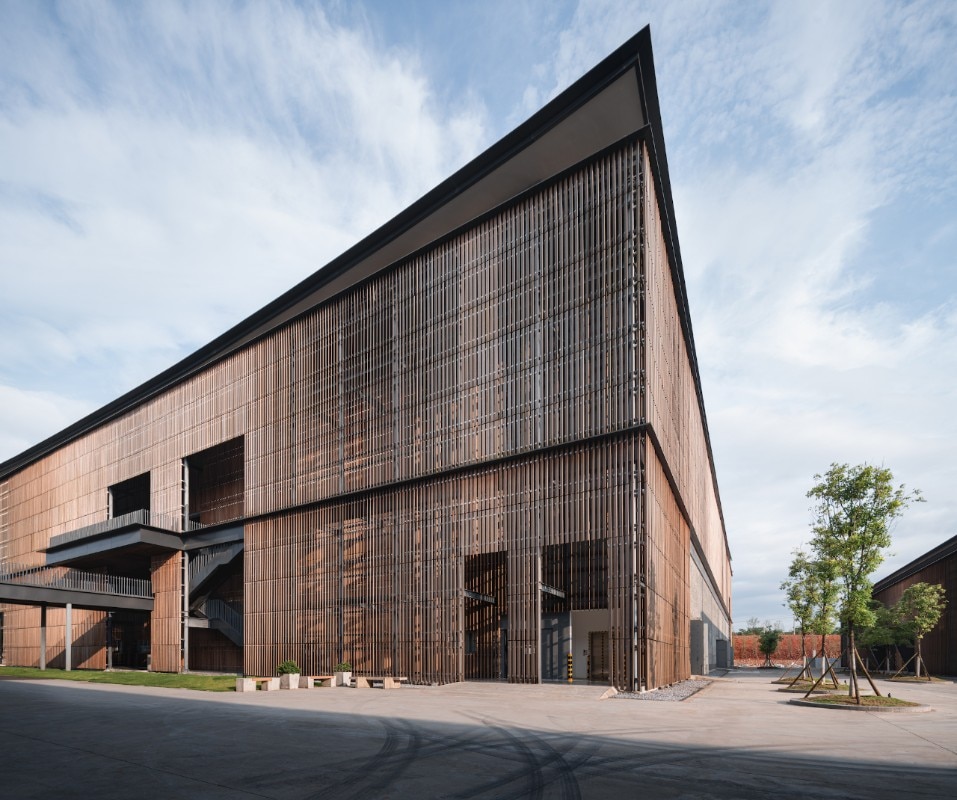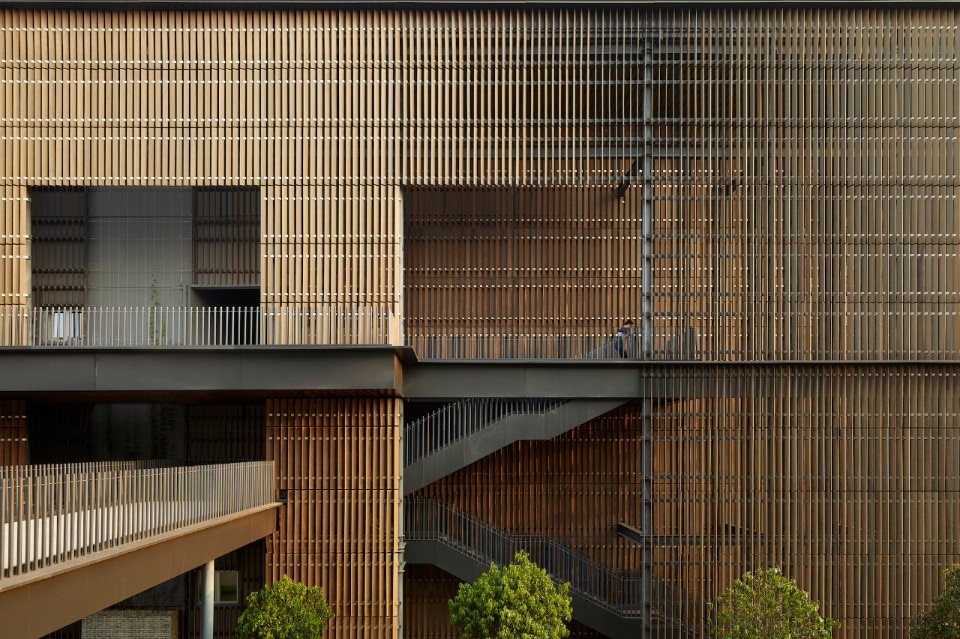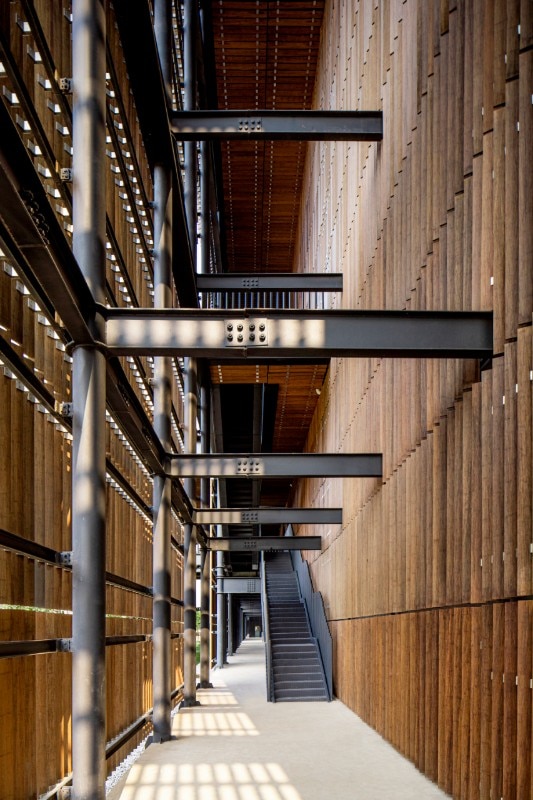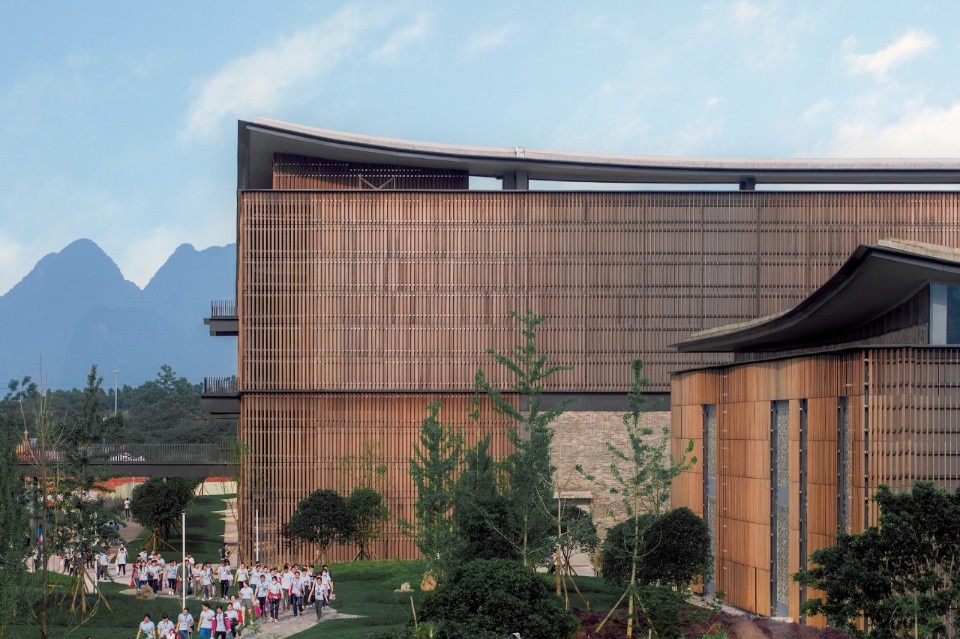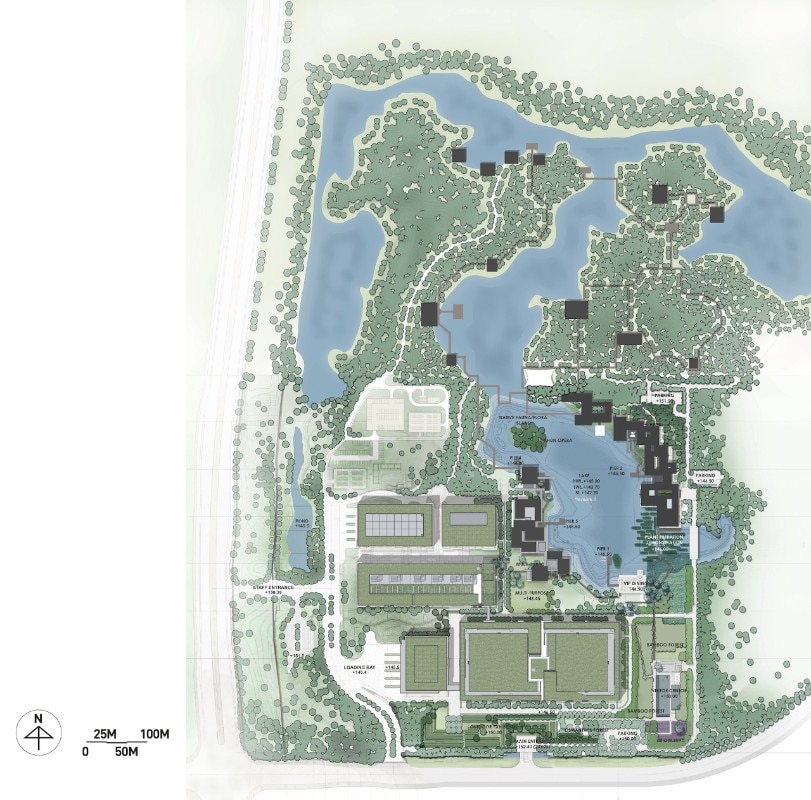Based in Hong Kong, the Ronald Lu & Partners studio stands out in the sustainable design and architectural design market. The company specializes in general planning, urban planning, interior design, and Transit-Oriented Developments (TOD). It has recently added to its portfolio the renovation of a clothing production plant previously marked by the activity of a brick factory. Located in Guilin, a city in the northeastern autonomous region of Zhuang in Guangxi, China, the project is defined by the designers as a “sustainable development garden.”
In the architectural design of the complex, the studio balanced sustainability with the principles of a Chinese garden and cutting-edge industrial practices. The project includes a production plant, an exhibition area showcasing the technological evolution of the textile industry, a central wetland area, and a botanical garden where natural dye crops grow.
“Today, we apply sustainability strategies from the early stages of the design process. Doing so during the pre-project and conceptual stages creates cost savings and performance efficiencies that continue throughout the entire life cycle of the buildings,” says Bryant Lu, Vice Chairman of Ronald Lu & Partners. “Using a transdisciplinary design process also facilitates integrating sustainability with design and allows synergy and innovation in the design work.”
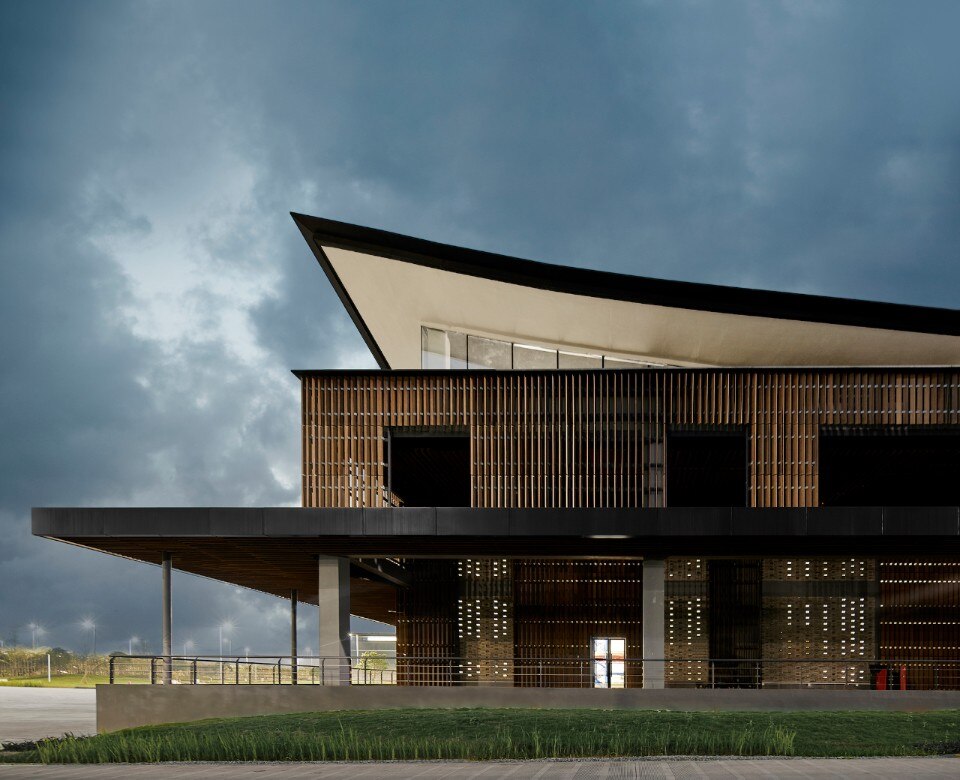
The team includes experts with multidisciplinary backgrounds in environmental design, engineering, materials science, urban microclimate specialists, urban ergonomics, sustainability, and climate risks. “When this perspective is added to the vision of our architects, it enables a cross-cutting approach in our projects and achievements,” concludes Bryant Lu.
For Integral, this collaboration led to an in-depth study of the building envelope – a bamboo second facade was added to the concrete structure – to increase insulation and minimize heat loss. The planning and design work by RLP Asia reduced the volume of existing buildings, giving the factory a very low overall thermal transmission value through a double-layered envelope and a low window-wall ratio, significantly reducing heat transfer into the interior spaces.


